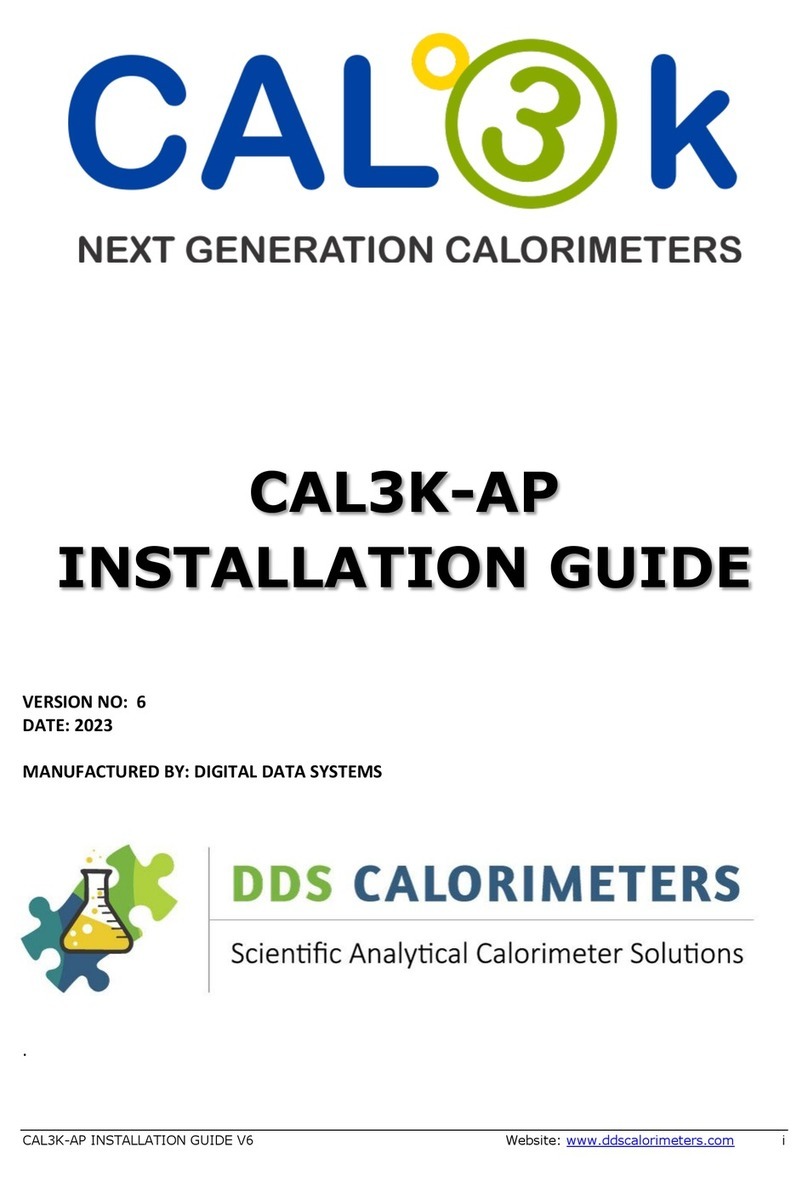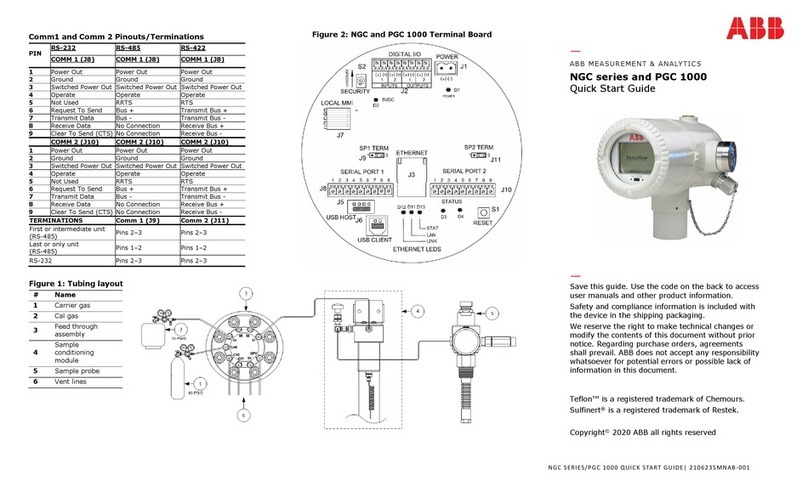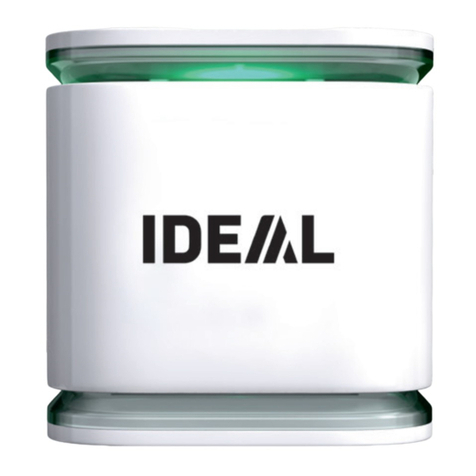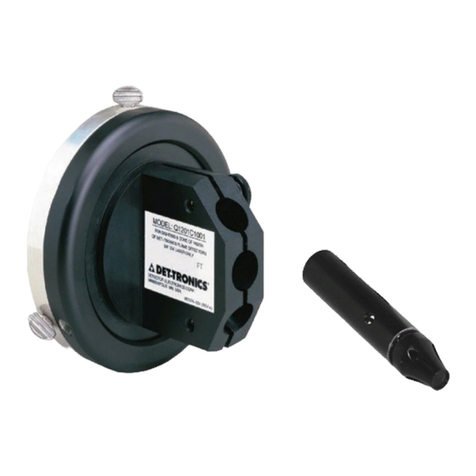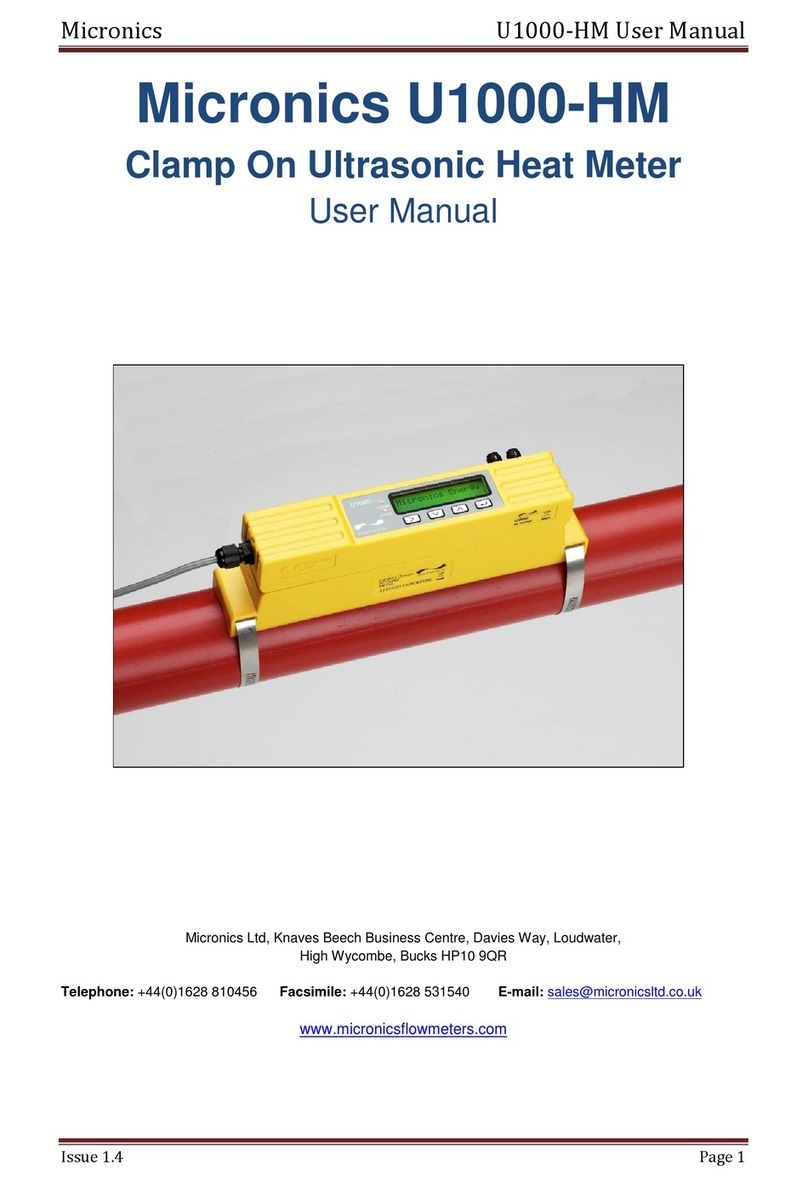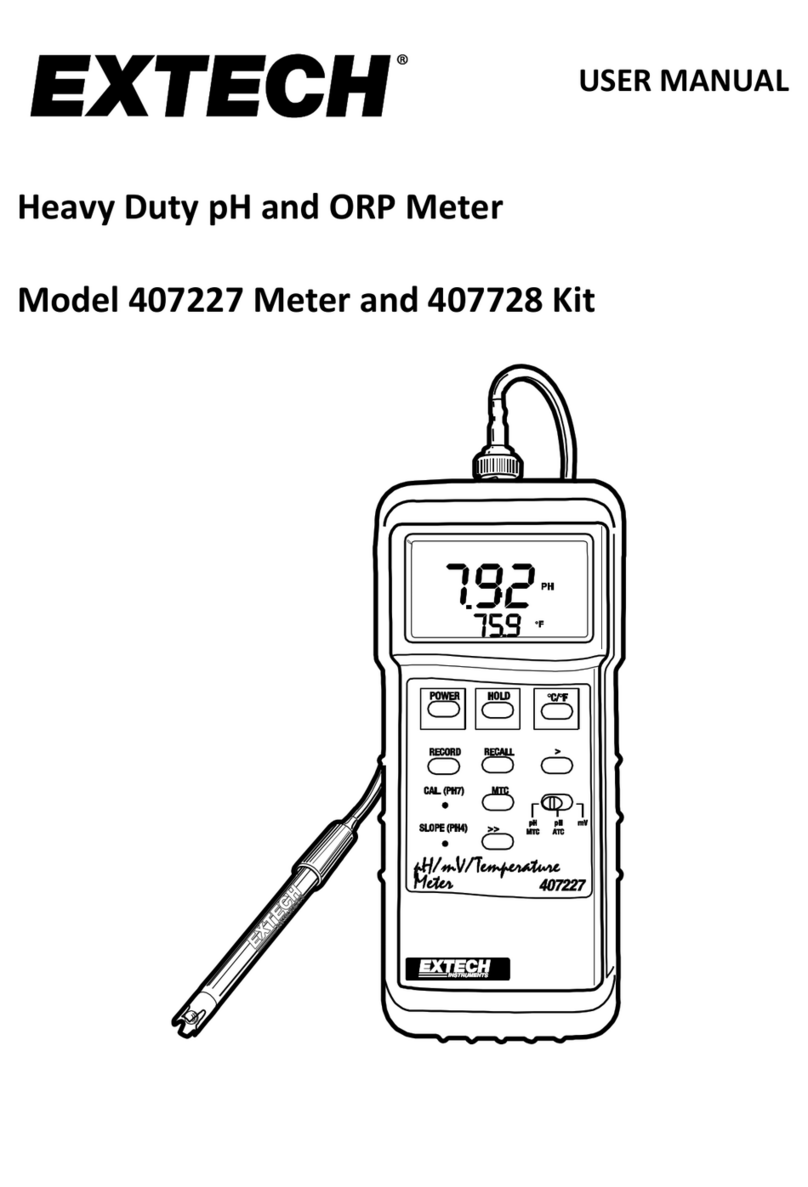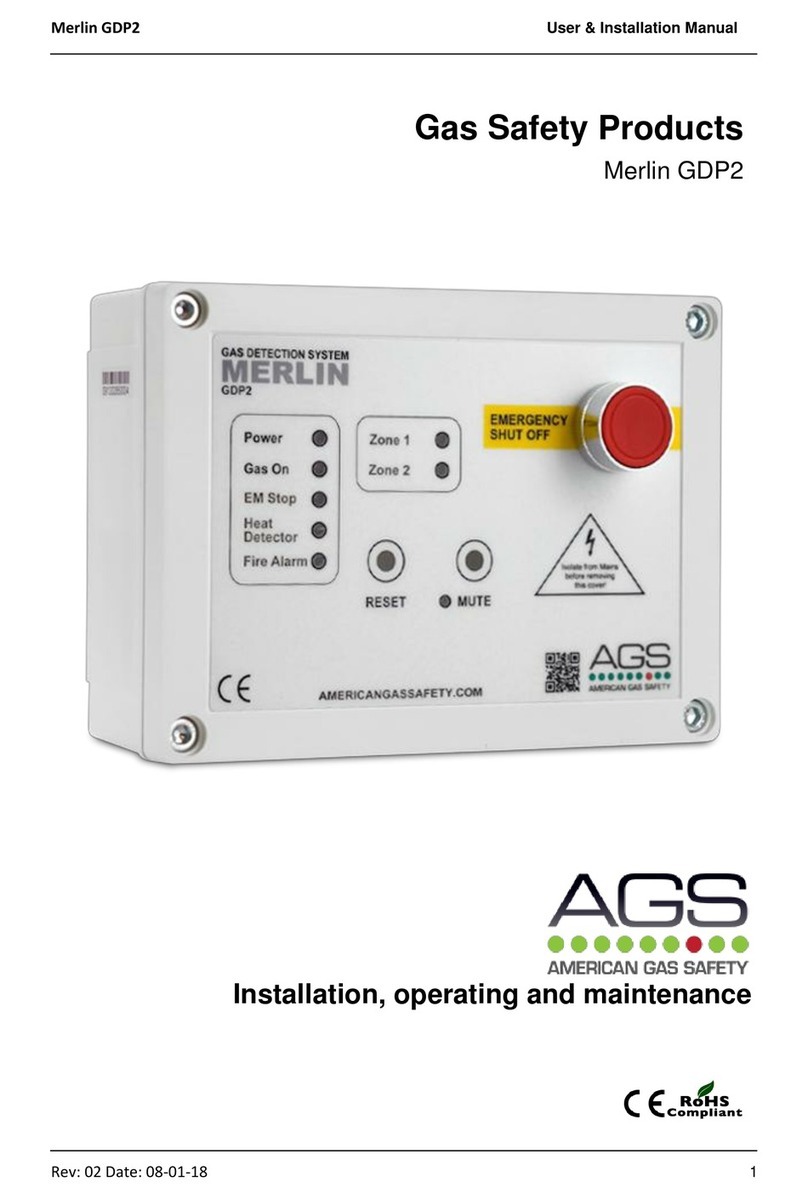NIRx NIRScout User manual

NIRx NIRScout User Manual
Page 1/36
User Manual for
NIRScout™, NIRScoutX™, and
NIRScoutXP™ Systems
NIRx Medical Technologies LLC
15 Cherry Lane
Glen Head, NY 11545, USA
www.nirx.net
Rev. No. 4.1, 08/2015

NIRx NIRScout User Manual
Page 2/36

NIRx NIRScout User Manual
Page 3/36
NOTICE OF INTENDED USE:NIRx NIRS imaging systems are NOT
intended for use as a clinical diagnostic or treatment guidance tool.
Neither the system hardware (NIRSport, NIRScout, NIRScoutX) nor system control
software (NIRStar) has FDA Approval. Use of these resources is for investigational
use only and requires IRB approval prior to performing measures on human
subjects.
Disclaimer
NIRx, NIRScout, NIRScout Extended, NIRScoutX, NIRSport, NIRStar, NIRSlab, NAVI are Trademarks of
NIRx Medical Technologies, LLC.
NIRx products are protected by one or more of the following issued US patents and associated
foreign patents:
6,081,322, 6,662,128, 6,795,195, 6,937,884, 7,046,832, 7,099,519, 7,142,304, 7,471,975,
7,576,853, 7,616,984, 7,617,080, 7,778,693
Any third party trademarks mentioned in this document are the protected property of their rightful
owners.
All rights reserved, including the right to translate the document.
The content of the manual is the intellectual property of NIRx Medical Technologies, LLC. No part
of the manual may be reproduced or distributed in any form without the express written
permission of NIRx Medical Technologies, LLC.
Subject to change without notice.
© 2014 NIRx Medical Technologies, LLC

NIRx NIRScout User Manual
Page 4/36

NIRx NIRScout User Manual
Page 5/36
Table of Contents
1 General Information.............................................................................................................................. 7
1.1 Intended Use ................................................................................................................................. 8
1.2 Correct Use.................................................................................................................................... 8
1.3 Electric Safety................................................................................................................................ 8
1.4 Intended Readership ..................................................................................................................... 9
1.5 Related Documents....................................................................................................................... 9
1.6 Problem Reporting Instructions .................................................................................................. 10
2 Handling and Maintenance................................................................................................................. 10
2.1 Transport and Storage.................................................................................................................10
2.2 Safe Performance........................................................................................................................ 10
2.3 Cleaning, Sterilization, and Disinfection...................................................................................... 10
2.4 Routine Maintenance.................................................................................................................. 11
2.5 Waste Products and Disposal...................................................................................................... 11
2.6 Operating Environment............................................................................................................... 11
2.7 Use of Device............................................................................................................................... 11
3 Functional Description ........................................................................................................................ 12
4 Hardware Components ....................................................................................................................... 13
4.1 Main Frame .................................................................................................................................13
4.2 USB Controller Card ....................................................................................................................14
4.3 LED Driver Card ...........................................................................................................................15
4.4 Detector Card.............................................................................................................................. 15
4.5 Optical Probes .............................................................................................................................15
4.5.1 Connecting Fiber Optics to the Imager...............................................................................16
4.5.2 Connecting the LED POD Emitters to the Imager................................................................16

NIRx NIRScout User Manual
Page 6/36
4.6 Optodes and Head Gear.............................................................................................................. 16
4.7 Experimental Setup..................................................................................................................... 17
4.8 Trigger Inputs .............................................................................................................................. 17
4.9 Trigger Output............................................................................................................................. 18
5 Accessories.......................................................................................................................................... 18
5.1 Fiber optic probes and Led illuminators ..................................................................................... 18
5.2 Probe holders / Head Gear..........................................................................................................18
5.3 Cables.......................................................................................................................................... 18
5.4 Disposables .................................................................................................................................19
6 NIRScout Extended (NIRScoutX) Devices ............................................................................................ 20
6.1 Overview .....................................................................................................................................20
6.2 Hardware Components ............................................................................................................... 20
6.2.1 Main Frame .........................................................................................................................20
6.3 USB Connection ..........................................................................................................................20
6.4 LED Driver Card ...........................................................................................................................21
6.5 Detector Card.............................................................................................................................. 21
6.6 Digital I/O Trigger Card................................................................................................................21
6.7 Optical Probes .............................................................................................................................22
7 Accessories.......................................................................................................................................... 22
7.1 Fiber optic probes and Led illuminators ..................................................................................... 22
7.2 Probe holders / Head Gear..........................................................................................................22
7.3 Cables.......................................................................................................................................... 22
8 Error Messages and Trouble Shooting ................................................................................................ 27
8.1 List of Approved Accessories.......................................................................................................28
9 NIRScout / NIRScoutX Technical Specifications................................................................................... 29

NIRx NIRScout User Manual
Page 7/36
1General Information
Attention, consult accompanying documents.
Type BF equipment.
Warning, high voltage.
Protective earth (ground).
Do not dispose off in household garbage. Contact
Manufacturer for proper disposal information.
Mains disconnect OFF.
Mains disconnect ON.
Visible and invisible laser radiation
Device or component sensitive to electrostatic
discharge (ESD)

NIRx NIRScout User Manual
Page 8/36
1.1 Intended Use
The NIRScout/NIRScoutX NIRS measurement system is not a medical device and may be used in the
context of non-medical applications in order to carry out fundamental research on the basis of
neurophysiological methodology and data.
The device is intended to be used for the Quantification of relative concentration changes of oxy- and
deoxy-hemoglobin in tissue blood based on superficial diffuse near-infrared spectroscopic
measurements.
Use of the device for diagnosis, therapy, monitoring of vital life functions (such as
cardiovascular functions etc.) or other medical purposes is expressly forbidden.
The user is solely liable for any risks to test subjects (patients) associated with the investigation if the
device is not used in accordance with the correct use described.
1.2 Correct Use
Application environment
The device is permitted to be used in hospitals, clinics, other medical environments, research
institutes and other environments, provided that all the other stipulations regarding correct use
(e.g. with respect to the user) are met and that the device is used in accordance with its
intended use.
The device is not permitted to be used in the vicinity of explosive gases as may be the case in
operating theaters, for example.
Target group
The device is permitted to be used on healthy and sick adults, children and animals.
Users
The device is permitted to be used by physicians and medical experts.
The device is not permitted to be used by unqualified persons.
The device is not to be used by people who personally cannot read or understand the User
Manual (e.g. due to insufficient language knowledge, due to blindness).
1.3 Electric Safety
Properly ground the instrument.

NIRx NIRScout User Manual
Page 9/36
This instrument is grounded through the power cord. It is a Class 1 device. Use
only the power cord specified for your instrument (see section “Specifications”).
Use only a power cord that is in good condition.
WARNING: To avoid the risk of electric shock, this equipment must only be
connected to a supply mains with protective earth.
Do not operate without covers and panels installed
1.4 Intended Readership
This document is required reading for operators of NIRx NIRS imaging devices of the NIRScout™ product
family in order to avoid instrument misuse potentially leading to hardware malfunctions or data
corruption.
We furthermore recommend this document to any user concerned with the experimental planning or
data analysis of NIRScout measurements.
Important notes and warnings are indicated with this symbol throughout the
document.
1.5 Related Documents
The following user manuals and documents may contain additional information pertinent to the topic
matter of this user manual:
NIRx API Design Document for the real-time data streaming Software Development Kit (SDK)
NIRx NIRStar Software User Manual
NIRx DOTS (Dynamic Optical tissue Simulator) User Manual
NIRx NAVI (Near-Infrared Analysis, Visualization, and Imaging) optical tomography software User
Manual
To avoid personal injury and equipment damage, the user needs to turn off the
mains disconnect before removing covers, panels, or grounding connections.
Reinstall covers, panels, or grounding connections before turning the mains
disconnect back on.
WARNING! Modification of the equipment is not permitted.

NIRx NIRScout User Manual
Page 10/36
NILAB (Free MATLAB NIRS topography toolbox) User Manual
Headgear and optode placement Manuals
1.6 Problem Reporting Instructions
You may use the following ways of contacting NIRx for additional support and bug reports:
Web: www.nirx.net/contact
2Handling and Maintenance
2.1 Transport and Storage
NIRScout devices are mobile instruments and may be moved by the user between different investigation
sites (i.e., labs, exam rooms, etc.) within the institution of the original installation. When storing the
instrument, it should be covered to protect it from dust. NIRx recommends its dedicated hardcase
containers for prolonged storage and transport.
2.2 Safe Performance
The equipment should only be handled and operated by trained personnel. Operators must familiarize
themselves with the latest revision of the user’s manual before using the device.
The NIRScout instruments are intended for continuous operation.
2.3 Cleaning, Sterilization, and Disinfection
The outside of the instrument may be cleaned with a damp cloth. A mild soap or a window cleaner may
be used to aid cleaning; do not use solvents. Allow the instrument to thoroughly dry before use.
The fiber optic probe ends that come in contact with the skin can be cleaned and disinfected by wiping
them after use with isopropyl alcohol 70%.
DO NOT USE ETHANOL OR METHANOL OR ACETONE FOR CLEANING OF THE FIBER-
OPTIC SURFACES. THE FIBERS MUST NOT BE STERILIZED IN AN AUTOCLAVE.
The equipment must not be exposed to fluids or condensation humidity conditions.
During storage or transport, the equipment should be kept at a temperature
between -15°C to +70°C and at a relative humidity of 20% to 80% (non-condensing).
Ambient pressure should be within 700 hPa and 1060 hPa.

NIRx NIRScout User Manual
Page 11/36
2.4 Routine Maintenance
The fiber optic probes are delicate optical devices. Any strain, kinking, pinching, and tight bending
(bending radius < 2 cm) should be avoided since this can damage the fibers. Before each measurement,
the fibers should be visually inspected for signs of physical damage. In the case of suspected fiber
damage, please contact the manufacturer.
No regular service, calibration, or inspection of the instrument by the user, vendor, manufacturer, is
required for proper operation of the instrument. In order to maintain adequate signal quality, the user is
advised to regularly perform the system check procedures such as a Dark Noise Check (see, NIRStar
Software User Manual) and a static phantom stability measurement.
2.5 Waste Products and Disposal
There are no waste products from the equipment
Please contact the manufacturer for help with the disposal of the instrument or its components at the
end of its useful life.
2.6 Operating Environment
2.7 Use of Device
The NIRx NIRScout Near Infrared Spectroscopy (NIRS) imaging system is intended for non-invasive
transcranial Near-Infrared Spectroscopy (NIRS) of blood perfusion dynamics in the human head.
NIRScout is a research instrument. The instrument and all accessories are to be used for research
purposes only.
NIRScout Instruments are for indoor use only.
NIRScout instruments are not safe for the use in presence of inflammable
anesthetics. NIRScout instruments are not to be used in an operating room.
The equipment should be operated at a temperature of -10°C to +40°C and at a
relative humidity of 20% to 80% (non-condensing). Ambient pressure should be
within 700 hPa and 1060 hPa.
NIRx products are NOT “medical devices” intended to be used for the purpose of
diagnosis of disease or other conditions, or in the cure, mitigation, treatment, or
prevention of disease, or used as a life support device. Use of NIRx products are
solely for research purposes.

NIRx NIRScout User Manual
Page 12/36
…
…
…
…
…
f
mod1
f
mod2
gains
timing
USB controller
signals
Backplane
Detector channel
LED driver
MUX ADC
DO
DAC
1,2
CTR DI
CTRL
Trigger input
USB 2.0
Power supply
LP
…
4x
…
4x
8x
PD
LED
DI
Opto Iso
FOC
Fig. 1: Block diagram of NIRScout functional components and interconnections. FOC: Fiber optic cable; PD: Photo
diode; LP: Low-pass filter; LED: Light emitting diode; DI: Digital input; Opto Iso: Opto-isolator; USB: Universal
serial bus; MUX: Multiplexer; DAC: Digital-to-analog converter; DO: Digital out; CTR: Counter; CTRL: Controller;
fmod1,2: Modulation frequencies 1, 2.
3Functional Description
NIRScout performs dual-wavelength continuous-wave (CW) near infrared (NIR) diffuse tomographic
measurements on large tissue structures at high (= several Hz) sampling rates. The system facilitates NIR
illumination of multiple target locations in a time-multiplexed, scanning fashion. Using LED emitters at
two distinct wavelengths allows discrimination of the two oxygenation states of tissue hemoglobin. Both
wavelengths are emitted simultaneously and are distinguished by modulating and demodulating each at
distinct frequencies in the low kHz-range.
The instrument employs parallel readout of multiple optical detector channels, each of which uses
adaptive gain switching to maximize the dynamic measurement range (>109). The device features four
parallel, optically isolated digital input channels (TTL level) for the acquisition of event trigger signals.
The NIRScout instrument is operated through a graphical user interface (GUI) on a personal computer
(PC), to which it is connected by USB 2.0.
Fig. 1 shows a block diagram depicting the NIRScout hardware components and main signal connections.
All components except for the power supply plug into the instrument front and interconnect through a
backplane. The USB controller establishes data and control signal connection with a host PC and contains

NIRx NIRScout User Manual
Page 13/36
all data acquisition and control hardware necessary for instrument operation. This includes digital I/O
lines, counters, an analog-to-digital converter, and digital-to-analog converters.
The LED driver card provides multiple parallel precision current sources which allow the desired intensity
control of the LED emitters. Each optode incorporates two LED wavelengths, which receive distinct
current modulation frequencies in the low kHz range. A tissue scan is facilitated by sequentially turning
on and off LED optodes under digital control of the LED driver, at a rate of about 60 Hz.
Detection fiber optics are used to guide the transmitted and back reflected light from the target to the
detection card, each of which houses 4 detector channels. The optical signal transmitted by the fiber
optic cable is converted to a voltage proportional to light intensity by means of a photo detector (photo
diode) followed by electrical amplification. The gain of the amplifier is automatically adjusted by the
instrument to provide optimal signal-to-noise ratio depending on the intensity of the received light. The
instrument is therefore capable of dealing with optical intensities over an extremely large dynamic range
(>109), which allows diffuse transmission measurements on tissue over distances from under 1 cm to
about 4 cm. This makes the instrument suitable for optical tomographic ('multi-distance') imaging. The
amplifier output is low-pass filtered and converted to a digital signal with 16-bit resolution by the
controller board.
To allow time stamping of the measured data for the purpose of event synchronization with concurrent
measurements or experimental protocols, the instrument provides four parallel digital input channels.
Each of these is optically isolated from the rest of the system. Each input is over-voltage protected and
contains a comparator circuit ('Schmitt Trigger') to improve noise immunity. The inputs are TTL/CMOS
compatible and are positive-edge triggered.
4Hardware Components
4.1 Main Frame
The instrument's form factor is based on an industry standard modular rack enclosure. All main
functional components are implemented as modular electronic cards, which can be inserted as required
by the system's configuration. The back of the enclosure contains the AC mains power entry as well as
the main On/Off switch. Also situated in the rear panel is a cooling fan exhaust.
Fig. 2 shows the front and rear view of the instrument.

NIRx NIRScout User Manual
Page 14/36
Fig. 2: (a) Front view of the NIRScout 816 imaging system. (1) Quad-channel detection cards QDC-10; (2) USB
controller card USB-1618 with Trigger input (3); (4) Led driver card LED-16. (b) Rear View showing AC power
inlet and power main On/Off switch (1).
4.2 USB Controller Card
The USB controller (front panel shown right) performs all functions of
instrument control and signal acquisition and provides connections for
experimental timing signals through various digital I/O lines.
Communication to the host PC and instrument operation software is
established through USB 2.0 connection (1). Once connected the system
goes through a startup sequence during which the green status
indicator (2) lights up and then starts to blink. At this point, the data link
to the host PC is established.
The indicator (3) signals the power on state of the instrument. Only
when the status indicator is blinking and the power LED is lit is the
instrument ready for operation.
A rectangular 10-pin connector (4) provides four parallel, positive-edge triggered digital TTL input lines.
In addition, a coaxial miniature SMB coaxial connector (5) outputs a digital frame marker pulse for timing
purposes. This pulse is generated with the beginning of each scan, or measurement frame. Details about
the timing I/O signals can be found in sections 4.8 and 4.9.
All inputs and the output are optically isolated from the instrument electronics to enhance electrical
safety and signal integrity.
The USB should be connected before powering the system.
1
2
3
4
1
2
3
4
5
1

NIRx NIRScout User Manual
Page 15/36
4.3 LED Driver Card
The LED driver card (front panel, shown right) exists in an 8-channel
version with one rectangular connector, and a 16-channel version
(shown here) with two identical connectors (1, 2). For the 16-channel
version, the upper connector serves sources 1...8, and the lower
connector drives source 9...16.
One 8-channel source optode set (NIRx LED-POD-8) can be plugged into
each 20-pin connector.
4.4 Detector Card
The Quad-Channel-Detector (QCD) card front pane (shown right)
provides one fiber port connector (1) to accommodate four individual
fiber optic cables, which are secured by set screws. The instrument can
be configured with 1...6 QCD modules, offering 4...16 optical detection
channels in increments of four.
4.5 Optical Probes
Spectroscopic measurements of the cerebral hemodynamics are performed by placing optical emitters
(‘sources’) and receivers (‘detectors’) on the scalp. As illumination sources for the NIRScout systems
serve dual-wavelength LED emitters, which are placed directly on the skin.
The detectors are formed by fiber optic cables whose input ends make contact with the scalp and, whose
output lead to the fiber port connector of the QCD, and an optical sensor placed inside the instrument.
Connection should be established before powering up and operating the
instrument. Connecting and disconnecting the optode set during operation should
be avoided.
1
2
1

NIRx NIRScout User Manual
Page 16/36
Fig. 3: Sensors used with the NIRScout system. (a) Detection fiber optical cabels, bundle of four. The black plastic
tips are placed on tissue, the metal end ferules are inserted into the detection card. (b) Bundle of eight dual-
wavelength LED emitters. Black plastic ends with LED lens are placed on the skin, and the ribbon cable connects
to the LED driver card. (3) Example of optode placement on a Phantom head.
4.5.1 Connecting Fiber Optics to the Imager
Insert the metal ferrule of the fiber optic cable into the appropriate fiber port input. Carefully push in
the fiber until mechanical resistance is met. Do not exert strong force. It may help to perform slight
turning motions to ease the fiber connector into the port. Once the fiber is seated, turn the set screw
next to it clockwise to lock in the ferrule. A small amount of torque is sufficient to prevent the fiber from
slipping back out. Do not use strong force as this can damage the fiber ferrule. To release fiber, turn set
screw counterclockwise (a fraction of a turn will suffice) and carefully extract the ferrule.
Hints: All fiber ferrules should protrude into the port by the same amount. If some fibers are observed to
protrude out more than others, these may not be connected properly. Make sure the set screw is not
blocking the path for the ferule before connecting the fiber optic cable.
4.5.2 Connecting the LED POD Emitters to the Imager
The LED POD emitter flat ribbon cable is connected to the instrument through a flat ribbon cable. The
connector in the LED driver card is polarized to prevent reversed connection. Carefully insert the cable
until it is fully seated.
4.6 Optodes and Head Gear
A variety of fiber optic and LED-based optodes as well as probe placement systems are available for
NIRScout. An example of a fabric-cap based solution is shown in Fig. 7c. For detailed instructions and
handling advice, please refer to the specific operators' manuals.
The cable should only be connected or disconnected while the instrument is
powered down. Otherwise damage may occur to the LED optodes.

NIRx NIRScout User Manual
Page 17/36
4.7 Experimental Setup
Fig. 4 shows an example of a complete NIRScout measurement setup (no control PC shown). The target
under investigation is a head phantom (Dynamical Optical Tissue Simulator –DOTS). To organize the
probe cables and to serve as a strain relief an articulated arm with cable clamp is used.
Fig. 4: Complete measurement setup (control PC not shown). (1) NIRScout-1624 imaging system, configured for a
16-source-by-16-detector measurement. (2) Source optode cables; (3) Fiber optic detector cables; (4) articulating
arm with (5) base plate and (6) cable clamp for strain relief; (7) Head phantom.
4.8 Trigger Inputs
The digital input to the instrument has the following
specification:
Connector: IDC shrouded pin header, dual-row, 2.54 mm pitch
(pinout, see right)
Logic level: Positive edge triggered (i.e. low-to-high transitions)
TTL level.
Minimum pulse duration: Timing pulses should be at least 10 ms
long.
Maximum pulse duration: There is no restriction on the
maximum duration, but timing pulses should be separated by at
least 100 ms to be distinguished.
Trig 1 (3)
Trig 2 (5)
Trig 3 (7)
Trig 4 (9)
COM (10)
Pin 1
Fig. 5: Pinout of trigger input connector.
Trig 1…4 denote the Trigger input lines,
and numbers in parentheses denote pin
numbers. COM: common (= Ground).

NIRx NIRScout User Manual
Page 18/36
4.9 Trigger Output
A digital output signal is available for external timing purposes, accessible through a coaxial connector in
the front panel of the USB controller. The connector is a SMB, 50-Ohm, Jack (Male connector) that can
be readily interfaced with a standard SMB (Female) receptacle. This output provides a 0.1 ms positive
5-V pulse with the beginning of each scan frame of the imaging sequence.
5Accessories
All accessories and replacement parts are to be obtained only through NIRx directly, or from authorized
sales partners. Disposables may only be used if obtained from NIRx or authorized dealers, or with the
expressed approval by NIRx.
5.1 Fiber optic probes and Led illuminators
A wide range of fiber optic probes and LED illuminators is available for the NIRScout Series to suit a
diverse range of intended user applications. To provide up-to-date information about available products,
please inquire with NIRx or one of its authorized vendors.
5.2 Probe holders / Head Gear
A wide range of head caps and probe holders is available for the NIRScout Series to suit the diverse range
of intended user applications. To provide up-to-date information about available products, please inquire
with NIRx or one of its authorized vendors.
5.3 Cables
For the USB connection to the controller board, a generic cable of suitable length conforming to USB 2.0
guidelines may be used (a suitable cable is included with the instrument).
For power mains connection, a generic power cord may be used that adheres to the following: Three-
wire cabel with neutral, live phase, and protective earth wires of sufficient cross-section (1mm2
minimum for each wire), IEC C13 type connector for instrument connection, and applicable approvals or
certification (e.g., EU: VDE, TÜV, GS,... US: CSA, UL, … etc.).
A 3-m long trigger cable is included with the instrument, which connects a standard PC parallel port (25-
pin sub-D female connector) to the 10-pin rectangular connector at the USB controller front panel. The
cable connections are shown for reference in the following figure.

NIRx NIRScout User Manual
Page 19/36
Fig. 6: Connection schematic of the NIRScout trigger cable.
5.4 Disposables
Third-party disposables such as spatulas (for parting hair), contact gel, etc. may be used as long as the
applicable directives for medical safety (biocompatibility, etc.) are complied with. To assure
uncompromised data quality, we strongly advise use of disposables recommended by NIRx.
Trig 1 (3)
Trig 2 (5)
Trig 3 (7)
Trig 4 (9)
COM (10)
Pin 1
LPT port bit 0
LPT port bit 1
LPT port bit 2
LPT port bit 3
GND
Connector to
LPT (Parallel) output port
Connector to
NIRScout Trigger Input

NIRx NIRScout User Manual
Page 20/36
6NIRScout Extended (NIRScoutX) Devices
6.1 Overview
NIRScoutX is functionally identical to the NIRScout products but offers the following extended
capabilities:
Up to 32 fiber-based detection channels
Up to 48 LED illumination sources
Up to 8 digital input channels
Up to 8 digital output channels
NIRScoutX is operated through the same acquisition software NIRStar. For details please refer to the
NIRStar User Manual.
6.2 Hardware Components
6.2.1 Main Frame
The instrument's form factor is based on the 19-inch rack enclosure industry standard. The NIRScoutX
front panel is 63 horizontal partitions wide (= 320 mm (12.6”)) and 4 height units high (= 177.8 mm (7”)).
All the main functional components are implemented as modular electronic cards, which can be inserted
as required by the system's configuration. The back of the enclosure contains the AC mains power entry,
USB connector, and cooling fan exhaust. The main On/Off switch is located to the lower left of the
instrument front. Fig. 7 shows the front view of the instrument
6.3 USB Connection
The USB connection achieves all functions of instrument control and signal acquisition. The USB
connection will activate several seconds after turning on the instrument. The USB cable may remain in
Fig. 7: Front view of the NIRScoutX 816 imaging system. (1) Quad-channel detection cards QDC-10; (2) Trigger
input/otput card; (3) Led driver card LED-82; (4) Mains On/Off switch.
1
2
3
4
This manual suits for next models
3
Table of contents



